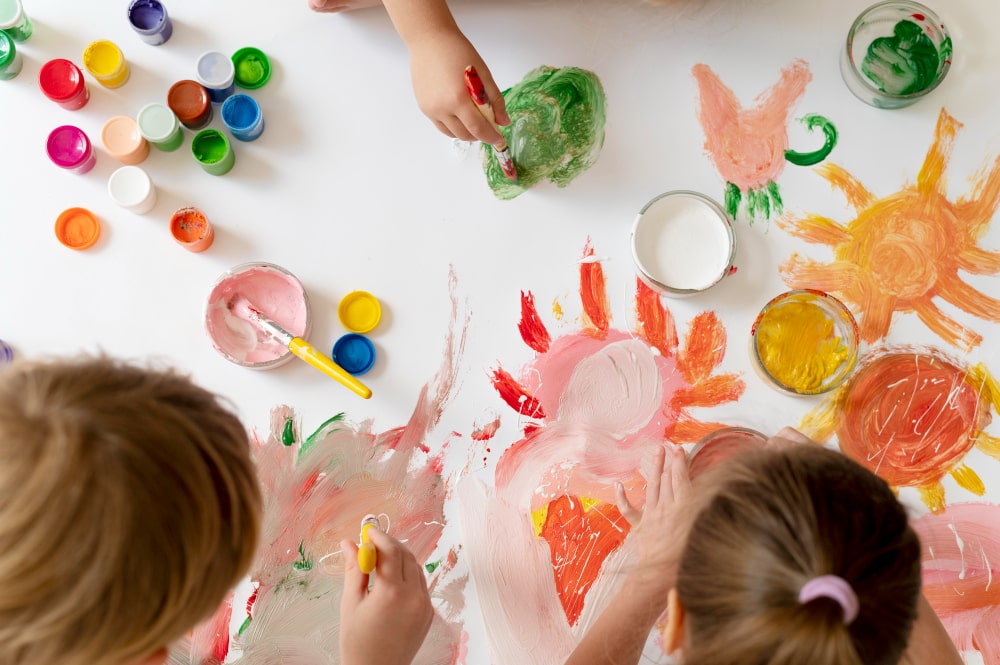Preschool education lays the foundation for a child’s academic and personal development. It is during these formative years that children start to explore the world around them, and one powerful tool that aids in this exploration is art. Art in preschool education is not merely about splashing colours on paper; it is a multidimensional experience that offers numerous benefits to young minds. In this comprehensive guide, we’ll delve into the world of art in preschool education and uncover its significance in shaping well-rounded individuals.
The Engaging Power of Art
Art has an innate ability to captivate young minds. From the moment a child picks up a crayon or dips a brush into paint, they are transported into a world of creativity and imagination. This engagement is more than just fun; it is a critical aspect of their cognitive development.
Stimulating Creativity
Art allows preschoolers to express themselves freely. Whether it’s through drawing, painting, or sculpting, children have the opportunity to bring their unique ideas to life. This unfettered creativity fosters innovation and problem-solving skills that will benefit them throughout their lives.
Enhancing Fine Motor Skills
The act of holding a crayon or a paintbrush and making deliberate strokes on paper requires fine motor skills. These skills are crucial for activities such as writing, tying shoelaces, and even using utensils. Art in preschool thus plays a pivotal role in refining these essential abilities.
The Cognitive Benefits
Beyond creativity and fine motor skills, art in preschool education offers a multitude of cognitive advantages.
Improved Concentration
Engaging in art projects encourages children to focus on the task at hand. Whether it’s colouring within the lines or completing a craft project, this concentration paves the way for enhanced attention spans, which are invaluable as they progress through their academic journey.
Language Development
Art provides an opportunity for children to express themselves verbally. They can describe their artwork, share their thoughts, and discuss their creative process with peers and teachers. This verbal interaction promotes language development and communication skills.
Emotional Expression and Social Development
Art is a safe space for preschoolers to explore their emotions and develop crucial social skills.
Emotional Outlet
Preschool can be an emotionally charged time for children as they learn to navigate their feelings. Art allows them to channel their emotions into a constructive and expressive outlet. Whether it’s drawing their happiest moments or crafting to cope with sadness, art helps them process their emotions in a healthy manner.
Collaboration and Sharing
Art often involves group activities, fostering collaboration and teaching children how to share materials and ideas. These social skills are invaluable as they enter kindergarten and interact with a broader peer group.
The Connection to Academic Success
The benefits of art in preschool education are not limited to the creative and emotional realms; they extend to academic achievement as well.
Preparing for Literacy
Art activities like drawing and colouring teach children the basic shapes and lines that are the building blocks of letters and numbers. This familiarity with shapes and lines aids in early literacy development.
Math Readiness
Art also has a hidden link to mathematics. When children create patterns, count objects, or work on symmetry, they are unknowingly preparing themselves for math concepts they will encounter in later years.
Nurturing a Love for Learning
Perhaps one of the most significant benefits of art in preschool education is its ability to instill a lifelong love for learning. When children engage in creative activities and see their ideas come to life, they develop a sense of wonder and curiosity about the world around them.
Making Art Accessible
To fully realize the benefits of art in preschool education, it’s essential to make it accessible to all children, regardless of their background or abilities.
Inclusive Art Programs
Preschools should strive to create inclusive art programs that accommodate children with various needs. This not only promotes diversity but also ensures that every child can reap the rewards of artistic expression.
Encouraging Parental Involvement
Parents play a crucial role in nurturing their child’s artistic development. Encouraging them to engage in art activities at home and participate in school art events strengthens the connection between home and school learning.
Conclusion: Art as a Cornerstone of Preschool Education
In conclusion, art in preschool education is not an optional extra but a fundamental building block of early childhood development. It engages young minds, fosters creativity, enhances cognitive skills, and promotes emotional expression and social development. Moreover, it paves the way for academic success and instills a lifelong love for learning. By making art accessible to all children, we ensure that every child has the opportunity to unlock their full potential through the power of art.

